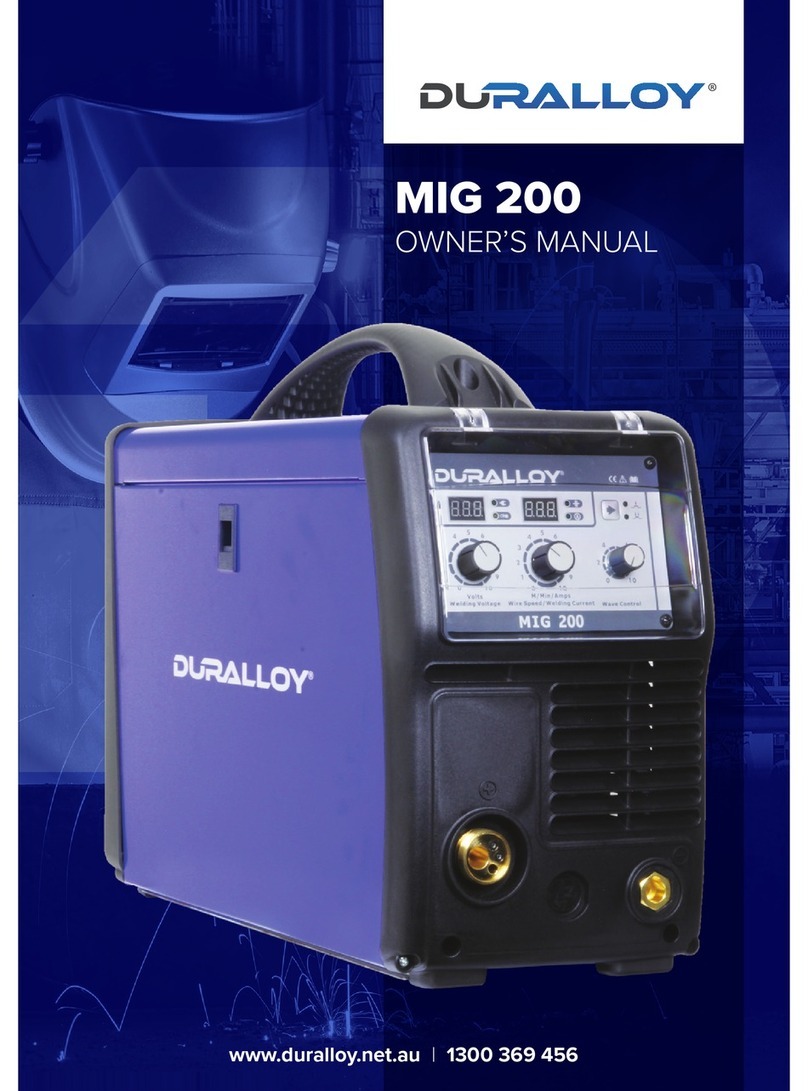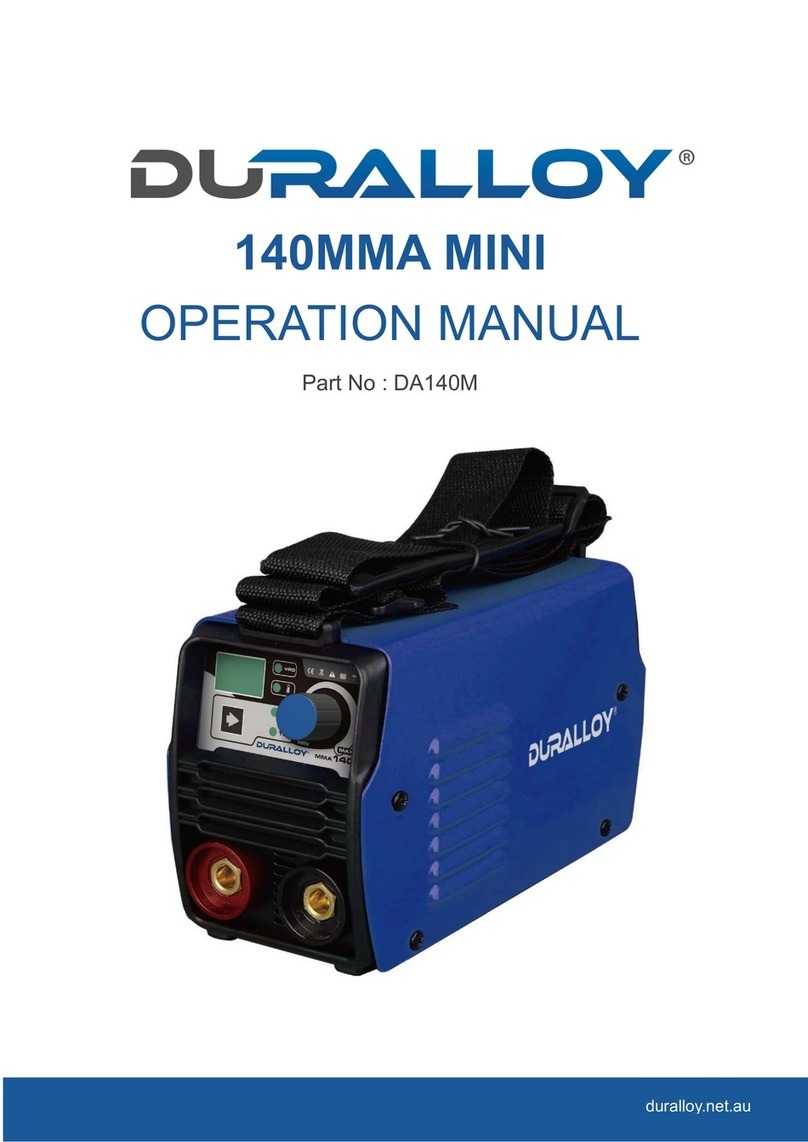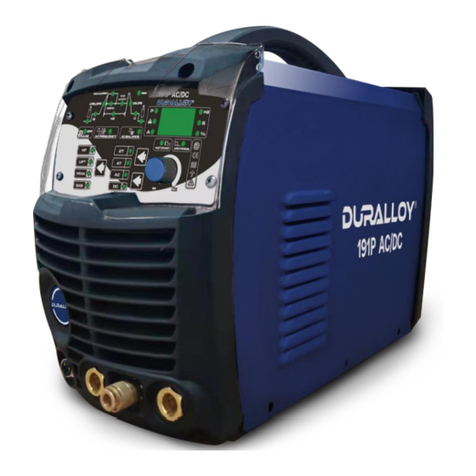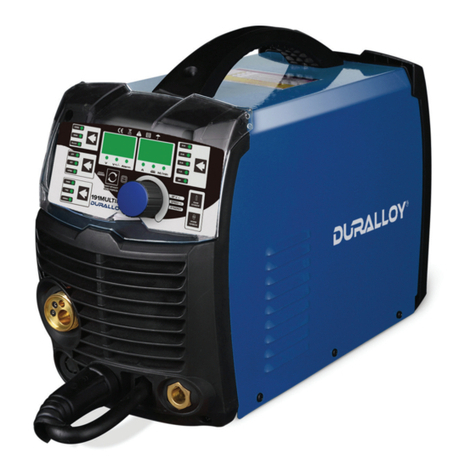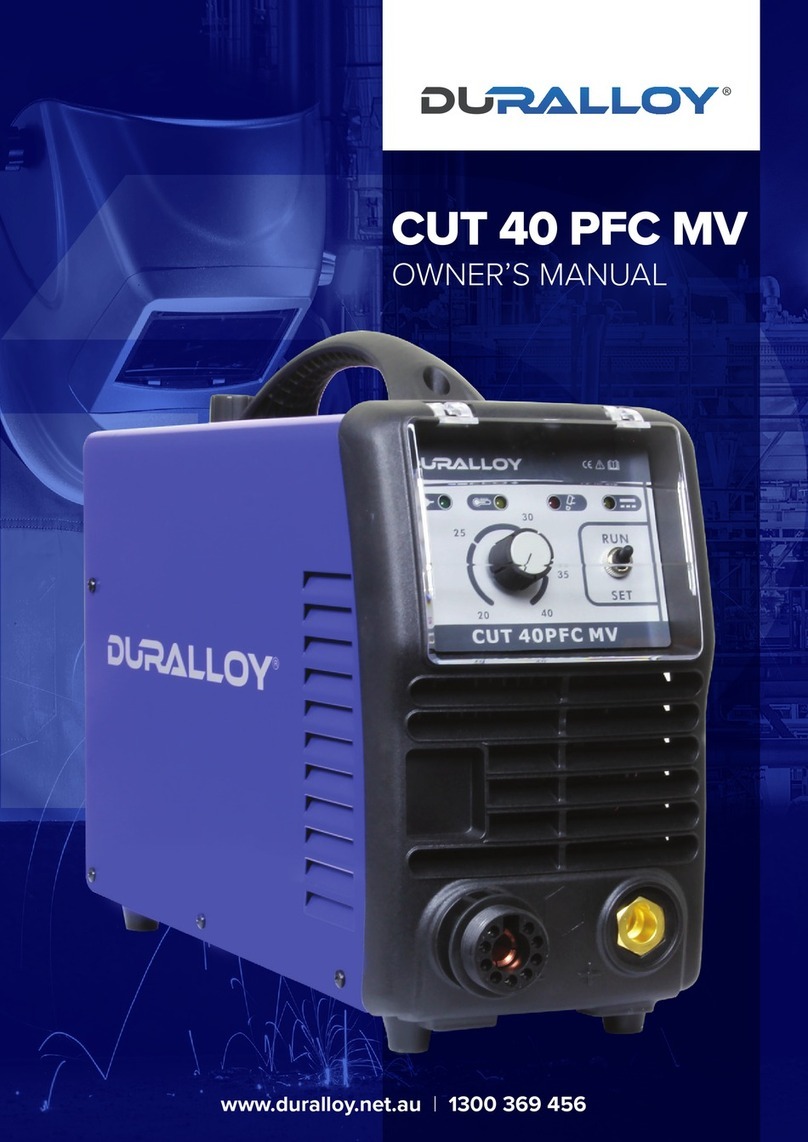Store and Retain this Manual
Retain this manual for the safety warnings and precautions,
assembly, operating, inspection, maintenance and cleaning
procedures. Write the product serial number at the rear of this
manual and keep this manual and the receipt in a safe and dry
place for future reference.
Important Safety Information
Failure to follow the warnings and instructions may result in
electric shock, fire, serious injury and/or death. Save all warnings
and instructions for future reference.
www.duralloy.net.au | 1300 369 456
SAFETY
This is the safety alert symbol to alert you to potential personal
injury hazards. Obey all safety messages that follow this symbol
to avoid possible injury or death.
DANGER!
Indicates a hazardous situation which, if not avoided, will
result in death or serious injury.
WARNING!
Indicates a hazardous situation which, if not avoided,
could result in death or serious injury.
CAUTION
Used with the safety alert symbol, indicates a hazardous
situation which, if not avoided, could result in minor or
moderate injury.
NOTE: used to address practices not related to personal injury.
General Safety Warnings
1. Maintain labels and nameplates on the welder. These carry
important information. If unreadable or missing, contact
DURALLOY for a replacement.
2. Avoid unintentional starting. Make sure the welder is setup
correctly and you are prepared to begin work before turning
on the welder.
3. Unplug before performing maintenance. Always unplug
the welder from its electrical outlet before performing any
inspection, maintenance, or cleaning procedures.
4. Never leave the welder unattended while energised. Turn
power o before leaving the welder unattended.
5. Do not touch live electrical parts. Wear dry, insulating gloves.
Do not touch the electrode or the conductor tong with bare
hands. Do not wear wet or damaged gloves.
6. Protect yourself from electric shock. Do not use the welder
outdoors. Insulate yourself from the work piece and the
ground. Use non-flammable, dry insulating material if possible,
or use dry rubber mats, dry wood or plywood, or other dry
insulating material large enough to cover the area of contact
with the work or the ground.
7. Avoid inhaling dust. Some dust created by power sanding,
sawing, grinding, drilling, cutting, welding and other
construction activities, contain chemicals known to cause
cancer, birth defects or other harm. Your risk from these
exposures varies, depending on how often you do this type
of work. To reduce your exposure to these chemicals, work
in a well-ventilated area, and work with approved safety
equipment, such as dust masks that are specially designed to
filter out microscopic particles.
8. People with pacemakers should consult their physician(s)
before using this machine.
WARNING!
Electromagnetic fields in close proximity to a heart
pacemaker could cause interference, or failure of the
pacemaker. The use of a Welder is NOT RECOMMENDED
for pacemaker wearers. Consult your doctor.
9. Ensure that the unit is placed on a stable location before
use.
WARNING!
If this unit falls while plugged in, severe injury, electric
shock, or fire may result.
10. Transportation Methods Lift unit with the handles provided, or
use a handcart or similar device of adequate capacity. If using
a fork lift vehicle, secure the unit to a skid before transporting.
CAUTION
Disconnect input power conductors from deenergized
supply line before moving the welding power source.
11. Exercise good work practices.The warnings, precautions,
and instructions discussed in this instruction manual cannot
cover all possible conditions and situations that may occur. It
must be understood by the operator that common sense and
caution are factors which cannot be built into this product, but
must be considered by the operator.
10
ARC 161/201 PFC
OWNER’S MANUAL






